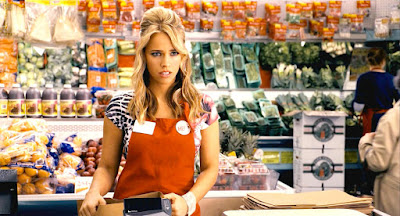It strikes me, after the fact, that I need to include a BIT of explanation with these ads rather than just throwing them at you. Unlike me, you may not remember them. These are vintage ads for kids' toys that are practically interchangeable. I don't know if Digger the Dog came ahead of Gaylord, but both toys had very catchy jingles. Digger had an adenoidal little boy who, while almost unintelligible, was mighty cute. The men who wrote these (for they were almost surely men) were geniuses in their own small way, for their little ditties plied drill-bits into our brains that screw with our memory to this day.
As a child, I wanted a horse so badly that I'd "ride" anything. I would hang upside down from the railing of a gospel church door and pretend it was a horse. I would pop the legs off one of those tin TV trays, stand inside the legs, and pretend to gallop around. Never did I get anything as impressive as Marvel the Mustang or Blaze, which would probably cost more than most families were willing to pony up.
The pooping dog was not something I experienced or wanted, not being a Barbie afficionado. In my day, it would have been considered horrific, since back than nobody pooped. I mean nobody, not even dogs.
These have only the fact that they're robots in common, but they're cool. Why am I bothered by the thumbnail in the bottom one? Does it remind me of a TNT blast, or something more ominous?
In any case, I remember most of these ads, particularly Digger the Dog and Gaylord, who seemed to be almost the same product. Likewise Marvel the Mustang (who came with the unforgettable slogan, "What horse do?") and Blaze, though unlike Marvel, he didn't really go anywhere. Though boy and horse seemed to be barreling along, it was obvious that only the background was moving, while Blaze just bounced up and down in one spot like those awful horsey-things mounted on springs. Marvel, on the other hand, kind of shuffled along, front and back legs stuck out awkwardly like diagonal table legs. No winding. No batteries. But no horse ever "did" like that.
(Wasn't there a Romper Room caterpillar that you rode that was something like that? Let me think. . .)
The pooping dog is quite a bit after my time, but I do remember the stir it caused when Barbie came out with Tanner. The idea was repeated some time in the '80s (?) with Pax, my Poopin' Pup, a much fuzzier, cuter dog who nevertheless produced the same stuff. Put it in one end, and it comes out the other.
SPECIAL BONUS AD! This one may only faintly resemble Marvel the Mustang and Blaze, but it's a mechanical horse, what the hell! This one DOES take batteries. What horse do? This one does.
POST-PONY: Sometimes, it just all comes together. Looking for that Romper Room riding caterpillar (which turned out to be Inchworm, with a jingle too dreadful to repeat here), I found - a riding DOG, so much like a cross between Digger the Dog and Gaylord that it almost made my hair stand on end! Well, not quite. But it's interesting.





































